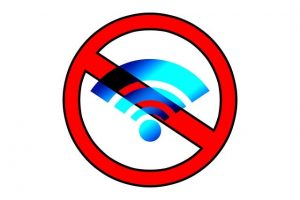Computer Not Connected To Internet
In today’s fast-paced digital world, a reliable internet connection has become an integral part of our daily lives. From staying connected with loved ones to conducting business, accessing information, and enjoying online entertainment, the internet plays a pivotal role. However, there are frustrating moments when our trusty computers won’t connect to Internet realm, leaving us puzzled and disconnected.
If you’ve ever encountered the exasperating dilemma of a computer not connected to internet, fear not! In this comprehensive computer won’t connect to internet troubleshooting guide, we delve into the various reasons that can lead to this computer not connected to internet issue and equip you with practical solutions to get your computer back online. Whether you’re a tech-savvy individual or a curious beginner, this blog will walk you through step-by-step procedures to diagnose and fix this computer slow internet problem, enabling you to regain your internet connectivity swiftly.
Why Computer is Not Connected to Internet:
There could be several reasons why computer connected but no internet issue is rising. Here are some common scenarios to resolve this computer slow internet issue:
- Network Disconnection: The most obvious reason for issue of computer says no internet is that the computer is not physically or wirelessly connected to any network. This could be due to a loose or disconnected Ethernet cable, a disabled Wi-Fi adapter, or the absence of any network infrastructure in the vicinity.
- Network Adapter Issues: The computer may have a network adapter, but it could be experiencing hardware or driver-related issues. This can cause the computer keeps dropping internet connection, even if it is physically connected to a network.
- Disabled Internet Connection: Sometimes users deliberately disable their internet connection for various reasons. This could be to avoid distractions, reduce data usage, reduce computer slow internet problems or protect the computer from potential security threats.
- Router or Modem Problems: The issue of computer not connected to internet may not be with the computer itself but with the network equipment, such as the router or modem. If these devices are not functioning correctly or have connectivity issues, it can prevent any connected device, including the computer, from accessing the internet leading to computer won’t connect to internet.
- Internet Service Provider (ISP) Outage: The Internet service provider may occasionally experience technical difficulties or scheduled maintenance, resulting in computer keeps dropping internet connection to all connected devices in the affected area.

- Firewall or Security Software Settings: Overly restrictive firewall settings or security software configurations can sometimes cause computer connected but no internet issues. This could be unintentional, or it might be a security measure to prevent potential threats.
- Malware or Virus Infections: Malicious software or viruses can compromise a computer’s ability to connect to the internet. Some malware might disable internet access to prevent the infected computer from receiving updates or security patches resulting computer connected but no internet.
- IP Address Conflict: If there is an IP address conflict on the network, where two devices have been assigned the same IP address, it can disrupt connectivity for both devices, including the computer.
- DNS Issues: Problems with Domain Name System (DNS) settings can also lead to an inability to access the internet. DNS translates human-readable domain names (e.g., www.example.com) into IP addresses. If the DNS server settings are misconfigured or malfunctioning, the computer may not be able to resolve domain names to the appropriate IP addresses, and it can cause the computer can’t connect to wifi issue.
To resolve these computer slow internet issues, users or IT professionals need to troubleshoot the specific problem and address it accordingly. Computer slow internet troubleshooting steps may involve checking physical connections, verifying network adapter settings, ensuring network equipment functionality, running antivirus scans, and configuring firewall or security settings appropriately.
How to Fix Computer Not Connected to Internet problem:
If your computer won’t connect to internet, there are several troubleshooting steps you can take to identify and fix the issue. Here’s a step-by-step guide to help you resolve this computer not connected to internet problem:
- Check Physical Connections: If you are using an Ethernet cable, ensure that it is securely connected to both the computer’s network port and the router/modem. If your computer can’t connect to wifi, check that if the Wi-Fi adapter is enabled and connected to the correct network. Also, make sure you are within range of the Wi-Fi router.
- Restart Your Computer and Network Devices: Sometimes, a simple restart can resolve this computer connected but no internet issue. Restart your computer and also power cycle your router and modem. To do this, unplug the power cables, wait for about 30 seconds, and then plug them back in.
- Check Network Adapter Settings: If your computer won’t connect to internet, Go to the “Network Connections” or “Network and Internet Settings” in your computer’s control panel. Verify that your network adapter is enabled. If it’s disabled, right-click on it and select “Enable.”
- Verify Wi-Fi Password: If you’re connecting via Wi-Fi, ensure that you’re entering the correct Wi-Fi password. Sometimes, an incorrect password can cause computer can’t connect to wifi issue.
- Test Other Devices: Check if other devices (such as smartphones, tablets, or other computers) can connect to the internet using the same network. If they can’t, the issue might be with your router or modem rather than the computer.
- Check for IP Address Conflicts: Sometimes, multiple devices may have the same IP address, causing conflicts and computer slow internet issues. To resolve this, ensure that your computer’s IP address is unique within your local network. You can do this by setting it to obtain an IP address automatically (DHCP) or manually assigning a unique IP address within the network range.
- Disable and Re-enable Network Adapter: If you suspect a temporary network adapter issue, try disabling and then re-enabling the network adapter. Right-click on the adapter in “Network Connections” and choose “Disable.” After a few seconds, right-click again and select “Enable.”
- Check Firewall and Security Software: Disable your firewall temporarily to see if it is causing the issue. If the internet works after disabling the firewall, adjust the firewall settings to allow internet access for the necessary applications and services.
- Run Network Troubleshooter: Many operating systems have built-in network troubleshooters. Use the network troubleshooter to automatically diagnose and fix common network issues.
- Check DNS Settings: If your computer is unable to resolve domain names (e.g., “www.example.com”), there might be DNS issues. Try changing your DNS server settings to use public DNS servers like Google DNS (8.8.8.8 and 8.8.4.4) or Cloud flare DNS (1.1.1.1).
- Update Network Drivers: Outdated or corrupted network drivers can cause connectivity problems. Visit your computer manufacturer’s website or the network adapter manufacturer’s website to download and install the latest drivers for your network adapter.
- Scan for Malware and Viruses: Run a full system scan using reputable antivirus or anti-malware software. Malware and viruses can sometimes disrupt internet connectivity as a part of their malicious activities.
If you have tried the above steps and still your computer says no internet, it might be a more complex issue, and you may want to contact your internet service provider (ISP) or seek assistance from a professional IT technician to help diagnose and resolve the problem.
Conclusion:
 A computer not connected to internet can be a perplexing and frustrating experience. However, armed with the troubleshooting insights and solutions provided in this blog, you now possess the tools to overcome these challenges with confidence.
A computer not connected to internet can be a perplexing and frustrating experience. However, armed with the troubleshooting insights and solutions provided in this blog, you now possess the tools to overcome these challenges with confidence.
Remember that when faced with a problem where a computer won’t connect to internet, patience and systematic problem-solving are key. Start with the basics: check physical connections, restart your devices, and verify network settings. Move on to more intricate steps like adjusting firewall settings, updating drivers, and running network diagnostics.
Additionally, never underestimate the power of a reliable antivirus or anti-malware software to safeguard against potential threats that may cause computer keeps dropping internet connection issues. Regular system scans are essential for a smooth and secure online experience.
It is crucial to stay proactive in maintaining a healthy internet connection. Keep your network equipment up-to-date and collaborate with your Internet Service Provider (ISP) whenever necessary to address broader network issues. To know more about our support services, you can visit the website Homepage.

